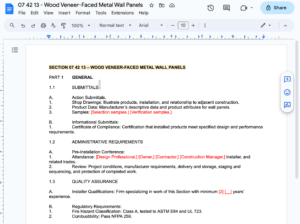Moisture Control in Building
Moisture problems in building construction have become a pressing issue in the industry, often leading to costly disputes and structural damage. In this comprehensive guide, we will delve deep into the complexities of moisture control in exterior building envelopes. Understanding the distinctions between weather barriers, moisture vapor retarders, and air barriers, as well as when and where to use them, is essential for ensuring a successful construction project that stands the test of time.
Why Moisture Problems Are More Common Today
Historically, buildings were far less plagued by moisture infiltration than contemporary structures. But why the shift? The root cause lies in the increased airtightness of newer buildings. Unlike their predecessors, many modern constructions lack operable windows and sufficient fresh air intake, thus limiting natural air circulation. This shift, coupled with the adoption of new construction materials and techniques, has made moisture-related issues more prevalent in today’s construction landscape.
A Real-Life Moisture Issue Example
To illustrate the impact of moisture control in construction, let’s examine a case study involving a historic county courthouse in East Texas, known for its scorching summers and high humidity levels. This courthouse, constructed in the 1890s with solid masonry exterior walls, had a spotless record of moisture resistance until a restoration project intervened. New wood windows, joint sealers, and non-breathable paint were introduced, inadvertently sealing the walls like never before.
Within a year, issues arose as the interior paint began to peel, and mold started to emerge on gypsum plaster. The reason behind this sudden moisture problem was simple: the windows, joint sealers, and paint had effectively sealed the walls, significantly reducing air infiltration. While previously any moisture that entered the exterior wall had the opportunity to migrate to the interior and evaporate, it was now trapped within the walls. The solution involved removing the interior plaster, applying a moisture vapor-resistant coating, reapplying plaster, and finishing with flat latex paint.
Understanding Moisture Barriers
Distinguishing between moisture barriers is a cornerstone of moisture control. Three primary categories are at play:
- Weather Barrier: This barrier is designed to thwart the passage of liquid water, often referred to as “bulk” water.
- Moisture Vapor Retarder: Its role is to impede the movement of water suspended in air.
- Air Barrier: As the name suggests, it prevents the flow of air, irrespective of its moisture content.
Choosing the Right Product Matters
Selecting the appropriate barrier is critical, as confusion can lead to catastrophic outcomes. The key is to align the product with your specific goals and environmental conditions. Remember that a material’s effectiveness in one aspect does not guarantee success in another. Some materials may multitask, serving multiple purposes effectively.
Understanding Condensation
Condensation is a phenomenon where humid air forms droplets on a cold surface. It’s important to grasp the concept of dew point, which signifies the temperature at which air becomes fully saturated, leading to condensation. Warm air can hold more moisture than cold air, and as temperatures drop, humidity increases. If condensation occurs within wall or roof assemblies, it can result in deterioration, mold growth, and a decrease in insulation efficiency. Preventing condensation hinges on understanding your climate:
- In Northern Climates, moisture vapor typically moves from the warm interior to the cold exterior, necessitating an interior vapor retarder.
- In Southern Climates, the movement is reversed, requiring an exterior vapor retarder.
- Mixed Climates experience shifting vapor movement directions based on atmospheric conditions.
To prevent condensation, place vapor retarders strategically, ensuring the dew point remains on the warm side of the barrier.
Weather Barriers
- Weather barriers come in various forms, including building papers, asphalt impregnated felts, and proprietary products. Proper installation involves placing the barrier on the exterior side of an exterior assembly. Consider employing a dual weather barrier system for added protection. Continuity is paramount, so initiate the installation at the assembly’s lowest point, seal lapped ends and edges, and ensure a tight seal around penetrations.
Moisture Vapor Retarders
- Understanding the causes of moisture vapor movement is essential. It occurs through diffusion, air movement, and heat transfer. A vapor retarder should possess a moisture vapor permeance (perm) rating of 1.0 or less, as per ASTM E96/E96M standards. Vapor retarders come in two primary types: membranes and coatings. Installation demands meticulous sealing of joints in sheet materials and airtight connections to adjacent materials and penetrations. Never install two vapor retarders on opposite sides of an assembly.
Air Barriers
- Air barriers play a pivotal role in reducing moisture vapor transmission by minimizing air movement across assemblies. Placing air barriers on the exterior side of an exterior assembly is crucial. Materials used should either be structural or applied to a structural substrate to prevent deflection and air leakage. Installation requires thorough sealing of joints in sheet materials and airtight connections to adjacent materials and penetrations. Inadequately constructed air barriers can allow unrestricted air passage when subjected to air pressure.
Material Selection
Selecting materials with a proven track record for achieving desired results is paramount. Where possible, opt for materials that serve multiple purposes, taking care to ensure their placement in the exterior envelope assembly aligns with the intended use.
Moisture control in buildings is undeniably a pivotal aspect of modern building construction. By grasping the nuances of weather barriers, moisture vapor retarders, and air barriers, as well as understanding condensation and making informed material choices, you can navigate this complex terrain successfully, safeguarding your construction projects against moisture-related challenges.
Related SimpleSpecs Specification Template: Section 07 28 00 Weather Barriers.



